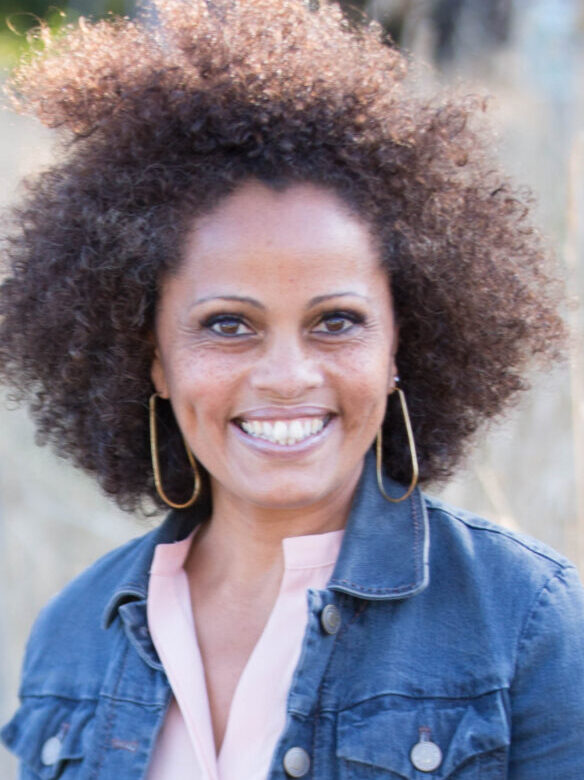Sonja Brunner, candidate for District 2
Santa Cruz city voters will choose a District 2 city council member in the March 5, 2024 election. The district includes the Lower Ocean and Seabright neighborhoods, the Santa Cruz harbor, Arana Gulch and parts of midtown.
Sonja Brunner is one of two candidates running for the District 2 seat. Read our guide to the other candidate, Hector Marin.

Sonja Brunner (Contributed)
Meet Sonja Brunner
Age: 54.
Residence: Seabright.
Occupation: Incumbent Santa Cruz City Council member, director of operations at the Downtown Santa Cruz Association.
Experience: Brunner was elected to the Santa Cruz City Council in 2020. She served as mayor in 2022 and vice mayor in 2021. The mayor position rotated among city council members during those years. It is now a directly-elected position.
Brunner has been an at-large commissioner and a tenant commissioner with the Housing Authority of Santa Cruz County. Brunner described herself as a “single mom in public housing” when she served as a tenant commissioner. Experience with the Housing Authority “has been a huge asset to my council work,” she said.
Brunner has also served on the board of the Downtown Santa Cruz Association. She has recused herself from votes and council discussion directly related to Downtown.
Read about Sonja Brunner’s positions:
Sonja Brunner’s record on Santa Cruz City Council
Brunner and Santa Cruz city council members Shebreh Kalantari-Johnson and Renee Golder created the Oversize Vehicle Ordinance in 2021. It banned overnight parking of RVs and other large vehicles without permits. The city started enforcing the rule in December 2023. “We also included different tier parking programs: the emergency parking, the overnight parking and the long-term safe parking programs,” Brunner said.
Brunner supported the closure of an unmanaged homeless camp at the San Lorenzo Park Benchlands in 2022.
Brunner said she has supported:
- The city’s three-year Homelessness Response Action Program.
- Efforts to create the city’s Housing Element, a plan for housing development over the next eight years.
- Affordable housing projects, including the Downtown Library project, Pacific Station North and Pacific Station South.
- The City Arts program, which has given grants to property owners to commission murals.
- The Downtown Pops! program to attract businesses to Pacific Avenue.
- Efforts to diversify city advisory commissions.
- Other equity initiatives, including updates to the city’s website to include the history of Santa Cruz’s indigenous people.
Because of her job with the Downtown Association, Brunner has recused herself from votes directly related to Downtown, including the Downtown library and affordable housing project, the Downtown expansion plan, and a change to the Downtown Plan that could allow a hotel up to 70 feet.
Read why Sonja Brunner is running for re-election
What local issues in your district affect you that make you want to run for office?
As a Black woman, a single parent, and a member of different boards, “I’ve had many different circles of community that have different needs,” Brunner said.
“I really hope to continue to support housing in our community, to support affordable housing, to support the arts, to support diversity and equity. And I know those tend to be labeled as buzzwords. But coming from my personal experience, and what I’ve seen over time, we’ve been able to really look at our systems and where we can improve.”
What is your dream for your district?
“It’s never about ‘what do I want,’” Brunner said. “It’s, ‘what do we all want?’”
In District 2, “I think the dream is, really, people want to feel safe. And safety looks many different ways to different people. But what I’m hearing a lot, just walking my neighborhood and talking to neighbors, is bicycle safety, pedestrian safety, protected bike lanes and safer streets,” she said.
Small businesses in lower Seabright “really want to feel like their businesses, their employees are supported,” Brunner said.
She also wants to represent District 2’s housing needs, she said. “Some of the dream for neighbors is more affordable homes, and for others, they don’t want big buildings next to their homes. And so I think these are all topics that we have to work through together and find the middle ground.”
Brunner said she also wants to support parks in District 2 and keep residents informed of upcoming projects like the Murray Street Bridge repair.
Fun fact about Sonja Brunner
“I have been a DJ since 1988, and I also roller skate dance,” Brunner said.
Campaign finances
See campaign contributions to Sonja Brunner and all local candidates.
Endorsements
Sonja Brunner’s campaign website does not include endorsements.
Read more Santa Cruz Local stories
- Report finds fewer homeless residents in Santa Cruz County — Aug. 4, 2023
- Coral Street homeless services plans advance in Santa Cruz — May 12, 2023
- Santa Cruz rail-trail segment to finish in February — Nov. 3, 2023
- Downtown Santa Cruz library project approved by city council — March 15, 2023


